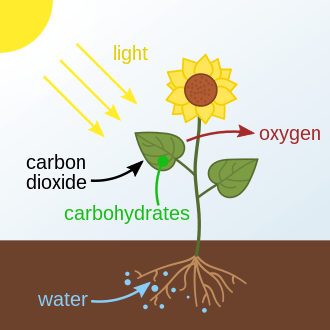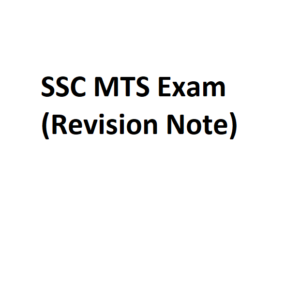Chapter 15 Life on the Earth (Sample Pages from e-Book)
1. Multiple choice questions.
(i) Which one of the following is included in biosphere?
(a) only plants
(b) all living and non-living organisms
(c) only animals
(d) all living organisms
Answer: (d) all living organisms
Explanation: The biosphere encompasses all living organisms on Earth, including plants, animals, and microorganisms. It is the zone where life exists, spanning the land, water bodies, and the atmosphere. This includes the interactions between living organisms and their environment.
(ii) Tropical grasslands are also known as:
(a) the prairies
(b) the savannas
(c) the steppes
(d) none of the above
Answer: (b) the savannas
Explanation: Tropical grasslands are commonly referred to as savannas. They are characterized by a mix of grasses and scattered trees, often found in regions with seasonal rainfall patterns and distinct wet and dry seasons.

(iii) Oxygen combines with iron found in the rocks to form :
(a) iron carbonate
(b) iron nitrites
(c) iron oxides
(d) iron sulphate
Answer: (c) iron oxides
Explanation: Oxygen reacts with iron found in rocks to form iron oxides, commonly known as rust. This chemical reaction occurs over time when iron is exposed to moisture and oxygen in the atmosphere.

(iv) During photosynthesis, carbon dioxide combines with water in the presence of sunlight to form:
(a) proteins
(b) amino acids
(c) carbohydrates
(d) vitamins
Answer: (c) carbohydrates
Explanation: During photosynthesis, the process by which plants and other organisms convert light energy into chemical energy, carbon dioxide (CO2) combines with water (H2O) in the presence of sunlight to produce glucose and other carbohydrates. This glucose serves as an energy source for the plant and is also essential for various metabolic processes.

2. Answer the following questions in about 30 words.
(i) What do you understand by the term ‘ecology’?
Ans: Ecology is the scientific study of the interactions between living organisms and their environment, including other organisms and physical factors. It examines how these interactions shape ecosystems and influence the distribution and abundance of species.
(ii) What is an ecological system? Identify the major types of ecosystems in the world.
Ans: An ecological system is a community of organisms interacting with their environment. Major ecosystem types include terrestrial (forests, grasslands, deserts) and aquatic (marine and freshwater) ecosystems. Each ecosystem is characterized by its unique biotic and abiotic components.
(iii) What is a food-chain? Give one example of a grazing food-chain identifying the various levels.
Ans: A food chain represents the flow of energy and nutrients from one organism to another in a linear sequence. An example of a grazing food chain is: Grass → Grasshopper → Frog → Snake → Hawk.
(iv) What do you understand by the term ‘food web’? Give examples.
Ans: A food web depicts the complex network of interconnected food chains within an ecosystem, illustrating multiple pathways for energy transfer. In a forest ecosystem, a food web might involve interactions among trees, herbivores (e.g., deer), carnivores (e.g., wolves), and decomposers.
(v) What is a biome?
Ans: A biome refers to a large, distinct, and relatively uniform terrestrial or aquatic ecosystem characterized by specific climate, vegetation, and animal life. Examples include tropical rainforests, deserts, tundra, and coral reefs. Biomes provide a framework for understanding global patterns of biodiversity and ecosystem dynamics.
3. Answer the following questions in about 150 words.
(i) What are bio-geochemical cycles? Explain how nitrogen is fixed in the atmosphere. Bio-geochemical cycles are natural processes that involve the cycling of essential elements, such as carbon, nitrogen, and phosphorus, through the biological, geological, and chemical components of the Earth’s ecosystems. These cycles maintain the equilibrium of elements between living organisms and the environment.
Nitrogen fixation is a crucial step in the nitrogen cycle. Atmospheric nitrogen (N2) is converted into a usable form, ammonia (NH3), or related compounds by certain microorganisms called nitrogen-fixing bacteria. These bacteria are found in soil, roots of leguminous plants, and aquatic environments. Through biological or industrial processes, nitrogen-fixing bacteria transform N2 gas into ammonia, which can then be assimilated by plants to form organic nitrogen compounds. This process plays a pivotal role in providing nitrogen, a vital nutrient, to plants and subsequently to animals and humans through the food chain.
(ii) What is an ecological balance? Discuss the important measures needed to prevent ecological imbalances. Ecological balance refers to the state of equilibrium and harmonious interactions among various components of an ecosystem, ensuring its stability and sustainability. It involves maintaining appropriate population levels of different species, nutrient cycling, and energy flow.
To prevent ecological imbalances, several important measures are necessary:
- Biodiversity Conservation: Protecting diverse species helps maintain natural checks and balances within ecosystems.
- Sustainable Resource Management: Adopting sustainable practices in agriculture, forestry, and fisheries helps prevent overexploitation of resources.
- Pollution Control: Reducing pollution and waste helps preserve air, water, and soil quality, preventing harmful effects on ecosystems.
- Habitat Protection: Preserving natural habitats and creating protected areas ensures the survival of various species and their interactions.
- Invasive Species Management: Preventing the introduction and controlling invasive species helps prevent disruptions to native ecosystems.
- Climate Change Mitigation: Addressing climate change by reducing greenhouse gas emissions helps maintain stable climatic conditions and ecological processes.
- Education and Awareness: Raising awareness about ecological issues and promoting sustainable practices among communities and policymakers is vital.
By implementing these measures, we can safeguard ecological balance and promote the health and well-being of our planet’s ecosystems and the species that inhabit them.



